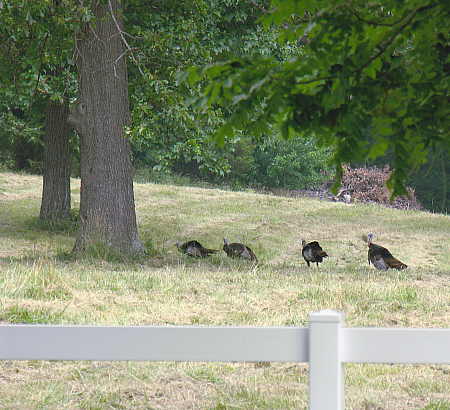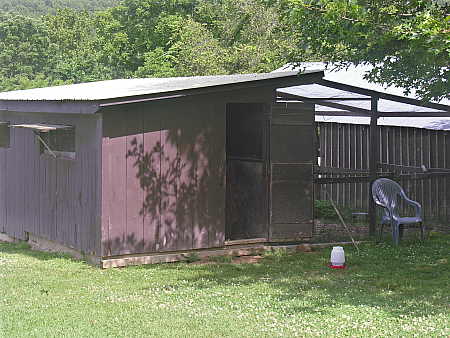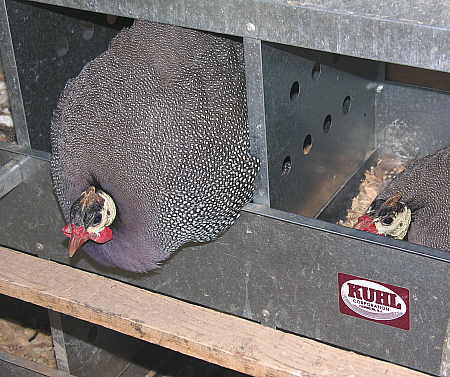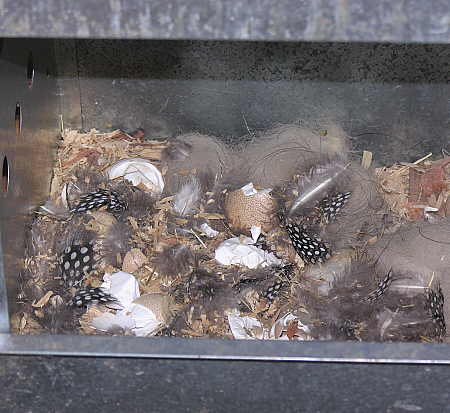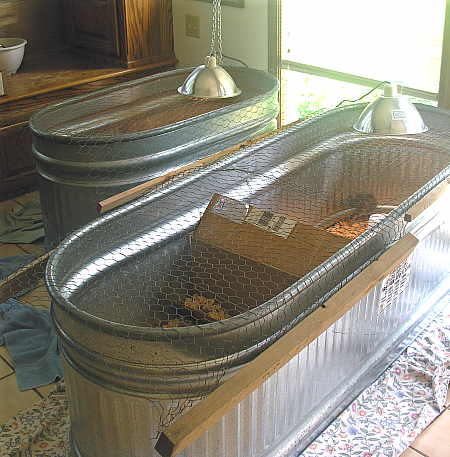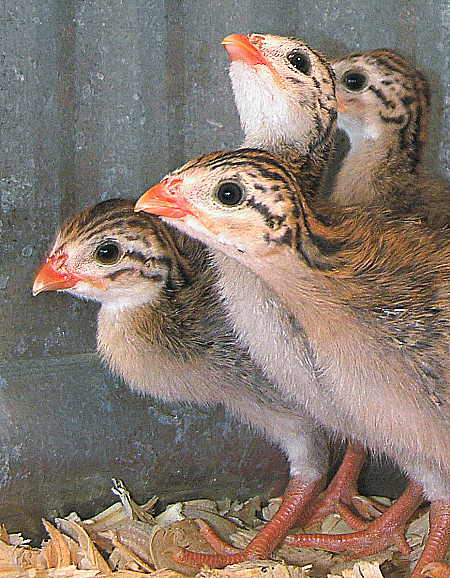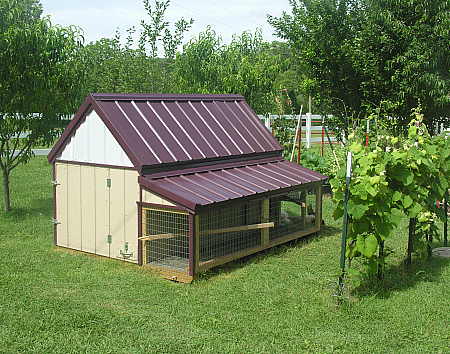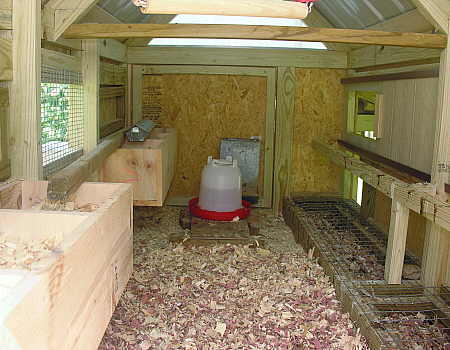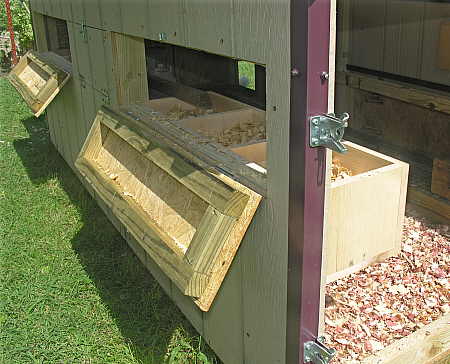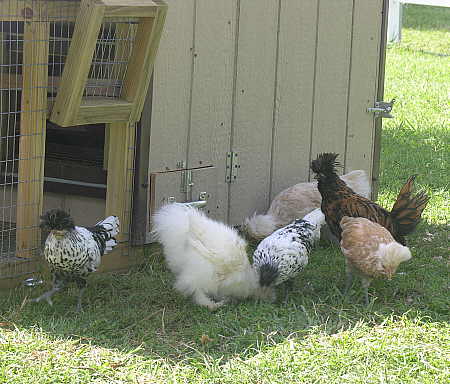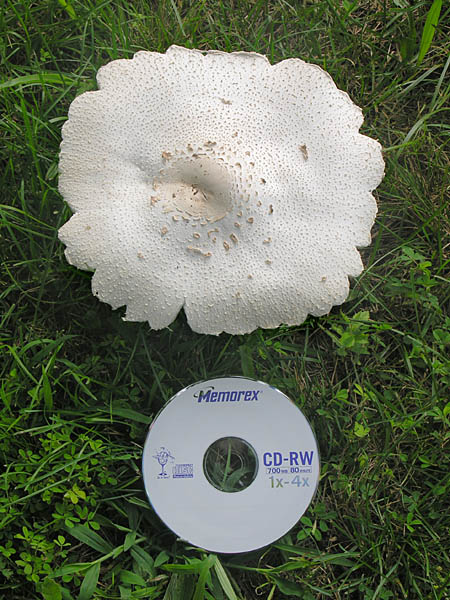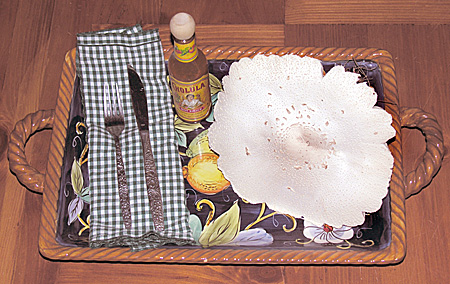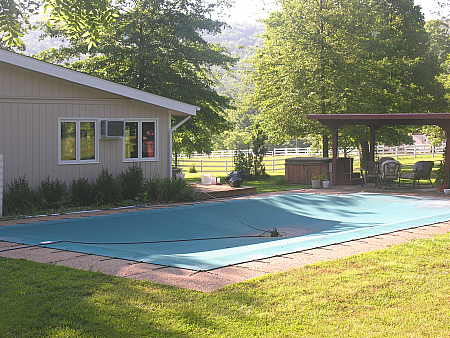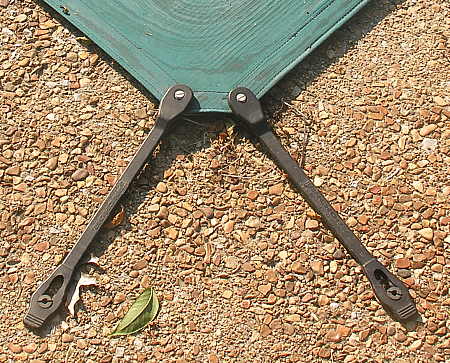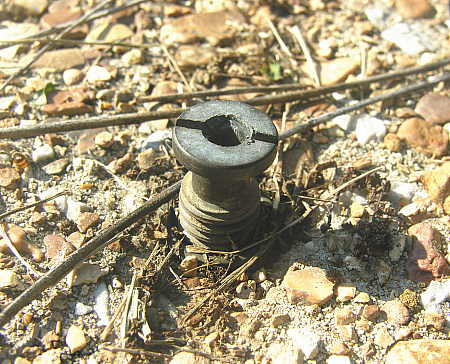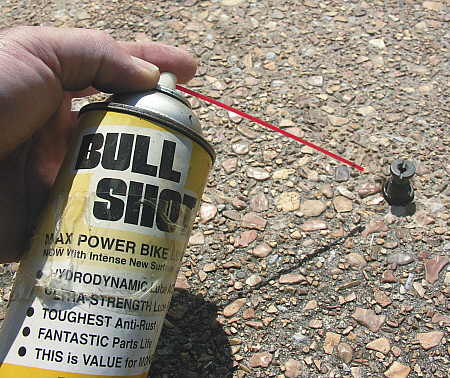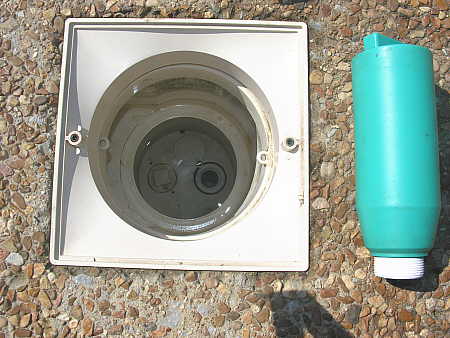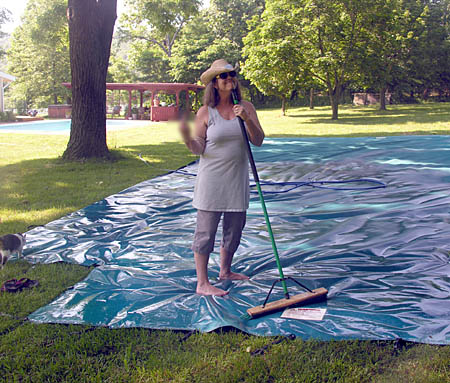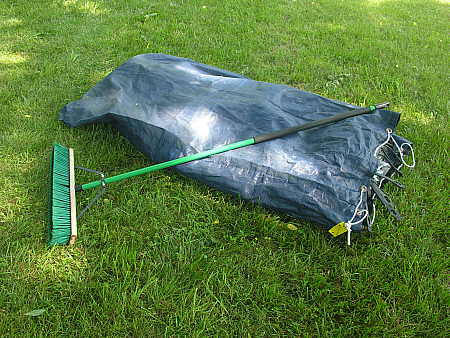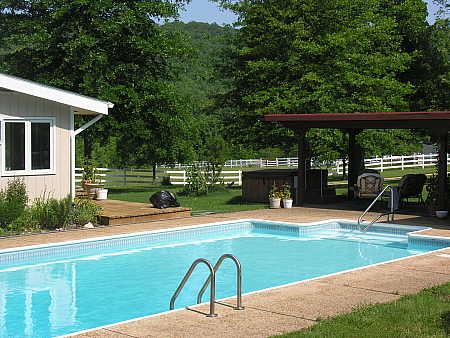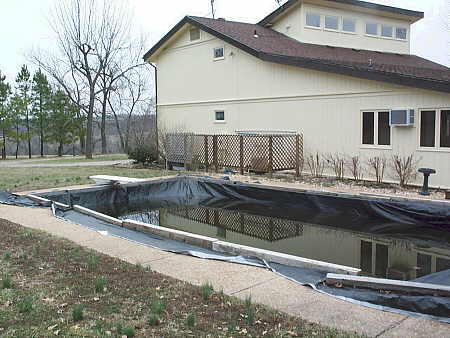I’m in a fowl mood because it seems like I’m surrounded by the feathered creatures day and night. Stepping out the door, I see a group of wild turkey parading before me. It’s a sight I always enjoy, and it gets me to thinking about the domestic fowl we (“we” – meaning Retta) raise as a hobby.
Here is one of our hen houses, which you may have seen in previous posts. We use this building to house our guineas, whose numbers range variously from a few, to several dozen, depending on the time of year and activity of the local predators.
Usually, our guineas would find some secluded spot in the tall pasture grasses in which to lay their eggs. This year, however, several have decided to utilize the nesting boxes that are installed in the hen house. They have been very broody as well, sitting on the eggs in quite a maternal fashion, patiently waiting for the eggs to hatch and the new-born chicks to emerge from their confining shell.
Daily, Retta inspects the nest boxes, and when she finds newly hatched keets, she removes them from the box, leaving behind the litter of egg shells and feathers that you see in the photograph above. To date, we have 36 little keets, and the number grows daily.
We place the new-born keets into our makeshift nursery, which is comprised of a couple of livestock water tanks, having a bed of pine shavings and warmth provided by a pair of incandescent heat lamps.
We will keep these fine looking guinea keets indoors, under our watchful eyes, until such time as their feathers come in fully and they grow to a more substantial size. Then, it’s back out to the hen house for them, where we will keep them penned up for a few weeks. After that, when the keets are large enough, we will begin letting them out of the hen house during the day, so that they can go about their glorious job of devouring thousands upon thousands of those ticks that we all love to hate so much.
Meanwhile, you may remember a post where we took a ride across Bull Shoals Lake on the Peel Ferry, the sole surviving Arkansas public auto ferry. Ostensibly, the reason for that ride was to look over some professionally built hen houses, to determine if we should buy, rather than build, a new domicile for the chicks Retta had ordered from a local hatchery. You can probably tell from the excellent workmanship of the new hen house in the picture above that we opted to buy, rather than build. After looking at the cost of materials to build an equivalent structure, it turned out being worth our while to purchase this hen house. It is sturdy, portable, and heavily constructed with quality materials by a group of Amish craftsmen in the Seymour, Missouri area.
The interior has a translucent fiberglass panel to allow light into the house, and features 6 nesting boxes, perches, and slide-out litter drawers beneath the perches. There is access to the protected outdoor “yard” area from within the house, and it is all protected from the weather with well-built metal roofing.
The nesting boxes have doors that open up from the outside, so that we can easily collect the eggs that the hens will begin laying sometime soon.
Here are just a few of the young chickens that now call this hen house their home. They say variety is the spice of life, and we seem to be pretty well-seasoned with this eclectic mix of chicken breeds, which includes assorted Polish chickens, Silkies, and Spitzhaubens.
So now, perhaps, you understand why I sometime feel that I’m in a fowl, fowl mood.


